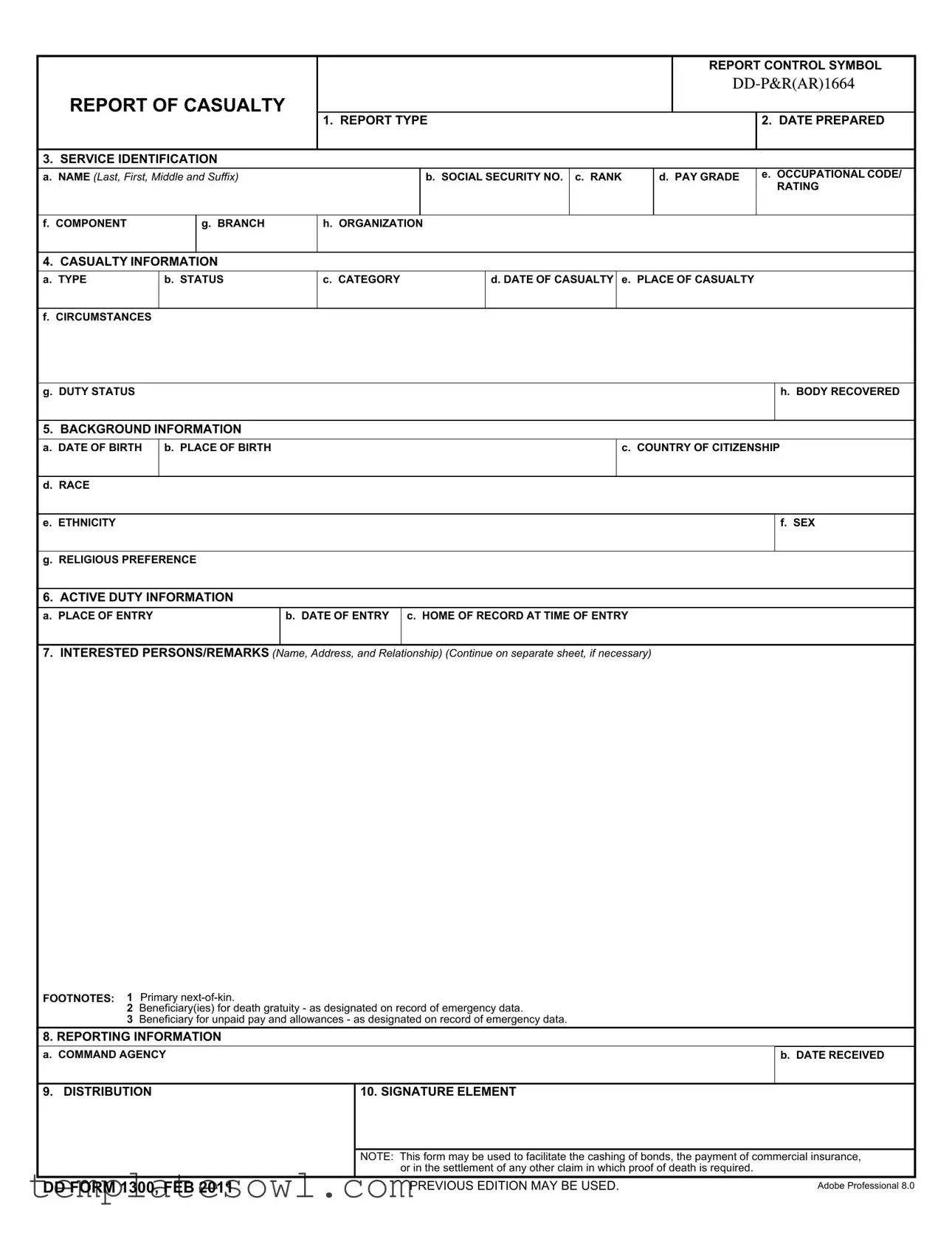Filling out the DD Form 1300 can be a critical task, especially during sensitive times. However, several common mistakes can complicate the process and potentially delay essential benefits. Understanding these pitfalls can help ensure accurate and timely submissions.
One frequent error occurs when individuals neglect to provide precise information in the Service Identification section. Incomplete or incorrect details, such as the service member’s name or social security number, can lead to errors in the casualty report. Each piece of information must be accurate for the form to be processed correctly.
Another common mistake is failing to clearly indicate the Type of casualty. Whether it’s a death or an injury due to hostile action matters significantly. Misclassification can have serious implications in terms of benefits and legal rights, potentially affecting the eligible family members significantly. Clear and accurate categorization is essential.
Many people overlook the date of casualty when filling out the form. Entering an incorrect date can result in complications, especially if there are ongoing legal or insurance matters. It is crucial to cross-check these details to avoid miscommunication and mishaps in claim processing.
Individuals sometimes fill out the Background Information section inconsistently. For example, omitting the service member's place of birth or inaccurately noting their race or ethnicity can create complications in identifying next-of-kin or beneficiaries. Each field holds importance, contributing to a complete profile of the individual.
Additionally, errors can arise when addressing the Active Duty Information, most notably in detailing the 'Home of Record At Time of Entry.' Failing to provide this can lead to eligibility questions for benefits, highlighting how attention must be paid to each section.
Many individuals do not think to include interested persons or relationships adequately. When the Interested Persons/Remarks section is incomplete, it can cause unnecessary delays in the claims process. Accurate documentation here ensures that all relevant parties are informed and can act when needed.
Another mistake that shouldn't be ignored relates to the Signature Element. Failing to include a signature can result in the rejection of the form. Always confirm that a signature is included, verifying that the form is signed by an authorized person, which is paramount for legal purposes.
Lastly, people often neglect to review the Reporting Information section before submission. Not ensuring that the command agency and the date received are filled out can affect the validation of the document. This step might seem minor, but it is crucial to the successful processing of your form.
Taking the time to review each section carefully can avert these mistakes. Accuracy in filling the DD Form 1300 serves not only to facilitate benefits but also to honor the service member's legacy appropriately.
